You can read the first part of Grahams paper here
a. definition and types of nutritional failure
Nutritional failure can have three general causes: 1) Deficiency of total caloric and protein intake (clinically manifested as marasmus), 2) Deficiency of protein intake only (clinically manifested as kwashiorkor), or 3) a combination of marasmus and kwashiorkor. (Editorial Ciencias Médicas , 2006) Sometimes kwashiorkor is called “malnutrition” and marasmus is called “undernutrition” to highlight the differences between receiving imbalanced nutrients versus no nutrients respectively.
i. marasmus
Marasmus can be either chronic or acute, each with different clinical signs. Acute marasmus is the result of an immediate or recent (within days or weeks) lack of nutrient intake. Weight to height ratio could be normal, given no history of chronic malnutrition, and other clinical signs of chronic marasmus will probably be absent or in very early stages. Dehydration may be present, as well as diarrhea and shock. Acute marasmus is a severe disruption of homeostasis without the establishment of homeorhesis. (Editorial Ciencias Médicas , 2006)
Chronic marasmus is the result of months or years of general undernutrition. The emaciated look of the patient is the result of undernutrition, diarrhea, and digestive intolerance. These patients have lost almost all subcutaneous fat tissue and most muscular mass. (Kehoe, Mallinson, Bronzino, & McCormick, 2001) Skin is pulled tight against their bones and prominent bony details can be seen and palpated. The first part of the body that experiences these symptoms is the trunk, then the extremities, and finally the face. With the loss of fat from the subcutaneous layer of skin, and absence of muscle tone due to muscular atrophy, wrinkles can become pronounced. The bodies of patients with chronic marasmus eventually adjust their metabolism to try to survive this condition in a process known as homeorhesis (where the metabolism may be altered but still adheres to a standard trajectory). They will always have a pathological weight to height ratio. (Editorial Ciencias Médicas , 2006)
ii. kwashiorkor
Kwashiorkor is almost always a manifestation of chronic malnutrition. It is most markedly set apart from marasmus by the obvious edema that usually afflicts the face and extremities. More severe edema can be present in the entire body and also produce skin lesions. The hair can suffer a change in pigmentation and texture and become thin, straight, with a red-yellow tint. This change is due to an absence of phenylalanine, an amino acid component of melanin. In severe cases, this can also be the result of skin color changes in people with high epidermal melanin content. The weight to height ratio usually varies from low-normal to normal, with some patients having an increased weight to height ratio. (Editorial Ciencias Médicas , 2006) This is due to the extra weight from water retention in the spaces between cells in the body tissue, the extracellular space (Smythe & Stoch, 1976). This fluid retention is known as ‘water weight’ and is manifested by edema, as mentioned earlier.
Magnetic resonance imaging (MRI) of the brain has shown that kwashiorkor is associated with loss of tissue mass in the white and gray matter of the brain. However these same examinations have shown that a full recovery of this brain atrophy or ‘cerebral shrinkage’ is attainable within 30-90 days of treatment. (Gunston, Burkimsher, Malan, & Sive, 1992) These findings confirmed earlier investigations of cerebral atrophy using computerized axial tomography (CAT) scans. (Househam & Villiers, 1987)
Electroencephalograms (EEGs) of kwashiorkor patients show a potential decrease in alpha wave activity (the waves that signal a relaxed, awake state) and an increase in theta waves (the waves that signal a sleeping state). This signifies that kwashiorkor is associated with low arousal levels and lethargic brain activity. (Bartel, Freiman, Rosen, & Geefhuysen, 1979)
I. treatment of malnutrition and undernutrition: liquid formulas versus ready to use therapeutic food
The World Health Organization has previously recommended treating undernourished and malnourished children with a milk-based liquid formula called ‘F100’. (The World Health Organization, 2007) This treatment regime is prepared by mixing dried skimmed milk, oil and sugar with a vitamin and mineral complex. (Diop, Dossou, Ndour, Briend, & Wade, 2003) Malnourished children are fed this formula for 3-7 weeks to recover. In the previous 10 years, an alternative to liquid-based treatment programs has been developed. This alternative is ready to use therapeutic food, or RUTF. Here the benefits of RUTF will be discussed, with special attention paid to a successful brand of RUTF called ‘Medika Mamba,’ which has been field tested and proven in Haiti.
The use of the F100 formula has several limitations as an effective treatment:
– it must be prepared under close supervision
– it must be prepared with clean water, which is often lacking in areas where severe malnutrition is present
– the formula must be imported, as the primary ingredients are not available locally
– the prepared formula quickly grows bacteria
– the caregiver must be able to successfully measure and administer the formula to the child
– the treatment often involves hospitalizing the patient for close supervision
The benefits of ready to use therapeutic food include:
– the ingredients are embedded in fats which prevents oxidation of the vitamins
– ready to use therapeutic foods do not need to be refrigerated and do not expire for months
– low humidity and the inability of bacteria to grow
– it is eaten without dilution or the addition of water
a. formula based treatment vs. ready to use therapeutic food treatment: an examination of past controlled experimentation
Since ready to use therapeutic foods have become an alternative to milk-based liquid formulas, such as F100, there have been several comparisons between the effectiveness of the two treatments.
A comparison between 70 severely malnourished Senegalese children aged 6-36 months showed a weight gain of 15.6 g/kg of body weight per day for the group treated with RUTF compared to a weight gain of 10.1g/kg of body weight per day in a group fed with the water and powdered milk based formula. (Diop, Dossou, Ndour, Briend, & Wade, 2003) This same study also showed the average rehabilitation time using ready to use therapeutic food was 13.4 days compared to 17.3 days using the F100 formula.
A similar study (Manary, Ndekha, Ashorn, Maleta, & Briend, 2004) of 282 malnourished 1 year-olds in Malawi compared the effectiveness of ready to use therapeutic food, a blend of maize meal and soy, and a ready to use therapeutic food supplement.[1] This study found that children who were rehabilitated with ready to use therapeutic food were more likely to reach a Z score of 0 on the weight-for-height comparison chart. This means that these children recovered to their ideal weight and height ratio faster than the children in the other treatment groups. The average weight gain for those receiving the ready to use therapeutic food was 5.2g/kg/day compared to 3.1g/kg/day in the other treatment groups. This study was completed as an outpatient treatment regime, showing that home based care with ready to use therapeutic food is possible.
Two other studies in Malawi found similar clinical results. The first study (Ciliberto, et al., 2005) showed that home based ready to use therapeutic food treatment resulted in a higher and quicker recovery rate than inpatient standard therapy (recovery of 79% compared with 46% and daily weight gain of 3.5 g/kg of body weight compared to 2.0g/kg of body weight respectively). The second study (Linneman, Matilsky, Ndekha, Manary, & Maleta, 2007) focused on the ability of community health workers to administer ready to use therapeutic food therapy successfully. It was found that home-based ready to use therapeutic food was successful when administered by a health professional or a community health worker. Of the 2,131 severely malnourished children, 89% recovered.
Outpatient recovery is an important part of ready to use therapeutic food because one of the advertised benefits of the treatment is that it is easier to administer in the home. Previous research (Collins & Sadler, 2002) comparing outpatient malnutrition treatment in Ethiopia with traditional treatment methods has also shown success with an 85% recovery rate in the outpatient treatment group.


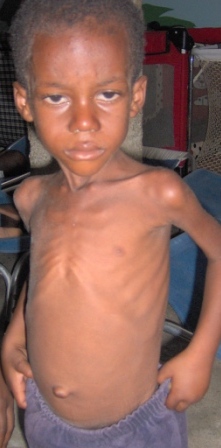
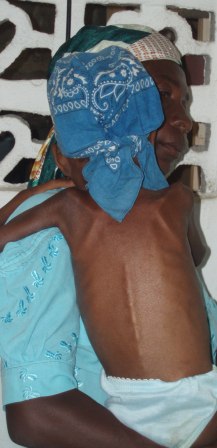
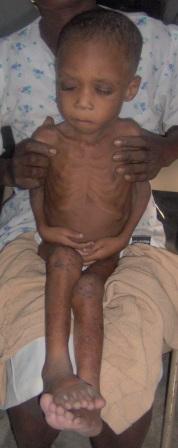
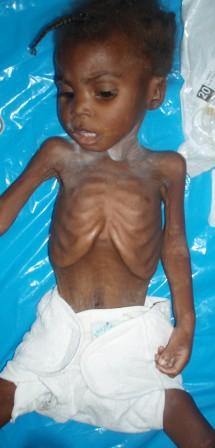
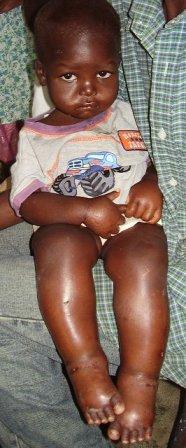
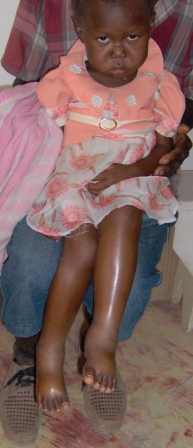
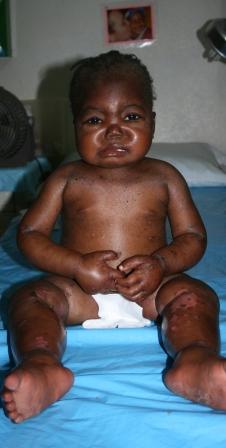
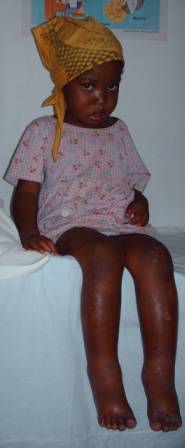
Comments(3)
Holly says
September 29, 2011 at 8:48 pmThanks again, Graham, for a really informative article!
Dee says
September 30, 2011 at 9:28 amThis is wonderful info-thank you to Grahm for the research and to RHFH for posting it for us to read! Licia-doesn’t all of your paperwork (yuk) help with this research?
grahamsowa says
October 2, 2011 at 6:03 pmHolly and Dee,
Thank you for your words of appreciation! And to answer Dee’s question yes, RHFH helped me so much with this article. In the 3rd part you will see the data from RHFH and how it compares with previous studies.
Graham